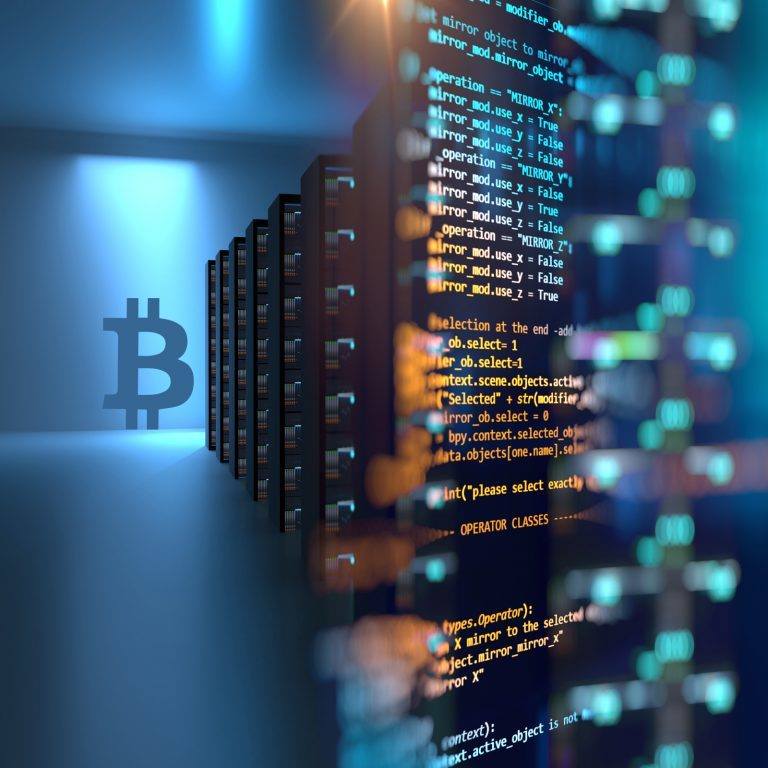


In case you’ve been living under a rock, or on Mars (and if that’s the case - what’s it like and how can we join you?) Bitcoin’s hash rate has been in the news.
In mid-September, the most popular cryptocurrency on Earth reached a huge milestone by surpassing a hash rate of over 100 quintillion hashes per second.

That’s 100 quintillion. How many zeros is that, you ask? Twenty. 100,000,000,000,000,000,000. To give you a sense of scale, if you laid out 100 quintillion coins flat like a carpet, they would cover the surface of the earth two hundred times over.
And it hasn’t stopped there. By the end of October, the hash rate reached 114 quintillion–and it continues to grow. But why is this such a big deal? What does it mean for the health of the network and the price?
In order to understand the hash rate and its functions, you first need a basic understanding of Bitcoin mining.
Bitcoin mining is a computerised process with three main functions:
Where fiat currencies are issued by central banks, new Bitcoins are “issued” to miners via a block reward for solving a block. They do this by using special hardware to solve a complex computational problem, which produces a hash – a seemingly-random 64 character output.
In order to find the hash number, Bitcoin miners use the SHA-256 Cryptographic Hash Algorithm. The data that a miner inputs into the SHA-256 hash function include all the current transactions which fit into the block’s size limit, the previous block’s hash result, and the nonce. The nonce is a random value the miner changes with each hash attempt to get a new output. Even a tiny change in input produces a completely different output.
Bitcoin miners are looking for an output with a certain number of zeroes. Today, Bitcoin miners have to find a hash which starts with nineteen zeroes. To get this number requires many, many attempts. Once the hash is found, the block is closed and it is added to the blockchain. After successfully mining a block, miners are rewarded with newly-created Bitcoins and transaction fees.
The hash rate, therefore, is the speed at which a miner arrives at a hash – the number of times a hash function is computed per second. As more miners mine Bitcoin, this causes a surge in the hash rate.
A 51% attack would allow bad actors to block transactions and allows them to double spend their own coins. However, the Bitcoin network has been designed to be more profitable to help secure the network than to attack it and the hash rate is a core part of this.
In order to carry out a 51% attack, a group of miners would have to control more than 50% of the network's mining hash rate. Therefore, the higher the hash rate, the more difficult it becomes to execute a 51% attack.
The higher the hash rate becomes, the higher the mining difficulty. This is because there is more competition. Finding a hash is in large part luck and how lucky/unlucky you are to solve a block or confirm a transaction. Higher hash rate equals more competition.
To increase the chances of solving a hash, people are getting more advanced and expensive computers for mining. BTC mining is exclusively on an ASIC equipment because it's the most efficient way to solve a SHA256 equation. These cost upwards of $1000. According to a site that tracks how much it would cost to run a potential 51% attack, it’d set you back at least $1.4 billion. Not quite worth it, is it?
So far in this article, we’ve been talking specifically about Bitcoin and its consensus algorithm. Proof of Work. In PoW, the key factor is computational power. Ethereum differs from Bitcoin in a multitude of ways, but it currently uses a similar PoW consensus algorithm. This could soon change, with founder Vitalik Buterin discussing a shift to Proof-of-Stake (PoS).
Proof of Stake’s consensus algorithm is dependent on the validator’s economic stake in the network. A set of validators take turns proposing and voting on the next block and the weight of their vote is determined by the size of their deposit, or stake. Anyone can become a validator for the Ethereum blockchain if they send a specific type of transaction that essentially holds their ether in a deposit.
This has implications for how the network is secured as hash rate will no longer be a factor when we talk about its security.
The security benefits aside, a high hash rate is a great indication of a healthy Bitcoin network. Think of a high hash rate as a miner’s vote of confidence in the respective cryptocurrency. Speculatively speaking, the more time and resources miners allocate to mining Bitcoin, and thus confirming transactions, the more confidence they have that the Bitcoin price will increase. You wouldn’t waste your time and precious resources on something you thought would fail, would you?
In terms of price, therefore, the confidence that high hash rate will inspire may cause it to go up. However, it is hash rate that tends to follow Bitcoin. When prices are high, miners will invest in the expensive equipment necessary to mine. They are incentivised by the higher price, rather than vice versa.
(Written by Luno Team)

Own A Piece Of Markethive – Lifetime Income Opportunity
Markethive, the first Social/Market Network built on the Blockchain, introduces The Entrepreneur Program
Click here, Markethive is Completely Free To Join
The Entrepreneur program is designed to leverage your system. Your free Markethive system is a market network, like a social network, but with powerful inbound marketing tools integrated into the system. This premier hybrid social network includes news feeds, blogging platforms, video channels, chat channels, groups, image sharing, link hubs, resume, profile page and peer to peer commerce. But more than a social network, we have also delivered to you “Inbound Marketing tools” like broadcasting, capture pages, lead funnels, autoresponders, self-replicating group tools, traffic analytics, and more. Plus, we are built on the Blockchain which allows Airdrops of 500 Markethive Coin (MHV) upon joining and micropayments for using the tools mentioned above. This is all free to you.
The Entrepreneur program is designed to add gold plating to an already stellar and unbelievably valuable system you receive for free.
The Markethive Coin – MHV Consumer Coin
Notably, MHV was listed on the first of many exchanges, including its own exchange [in development] in March in 2019 and is currently valued at $0.18. The Markethive coin will not be dependent upon speculative value as is the case with other cryptocurrencies and platforms, thereby creating eternal economic velocity in the entrepreneur ecosystem within Markethive.
